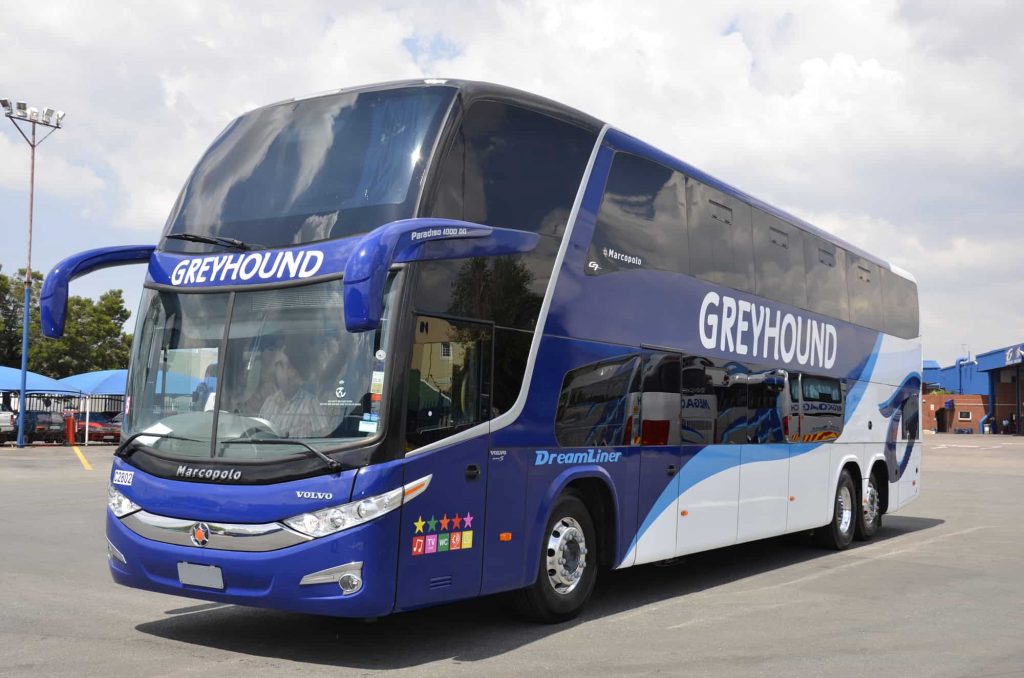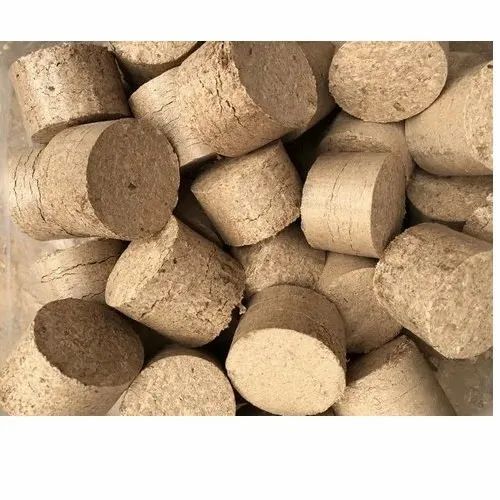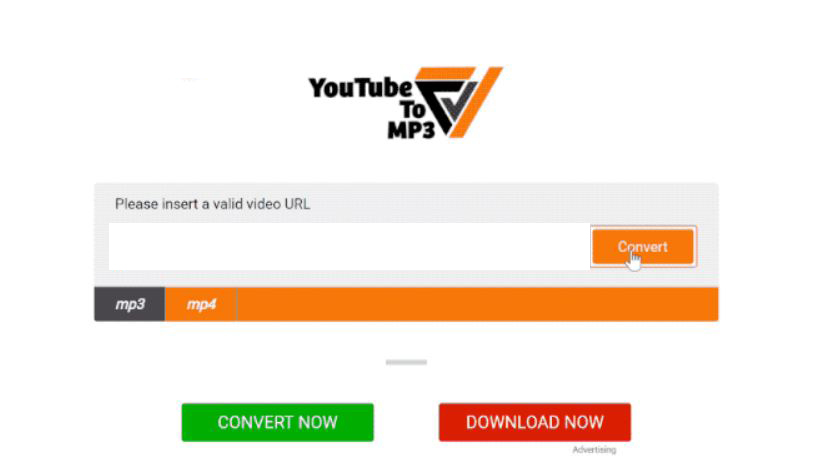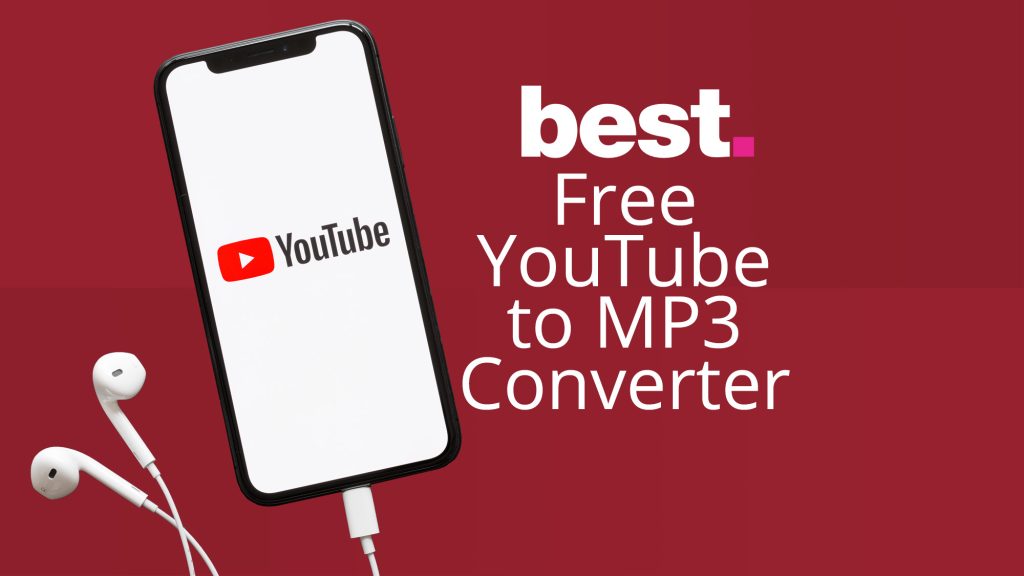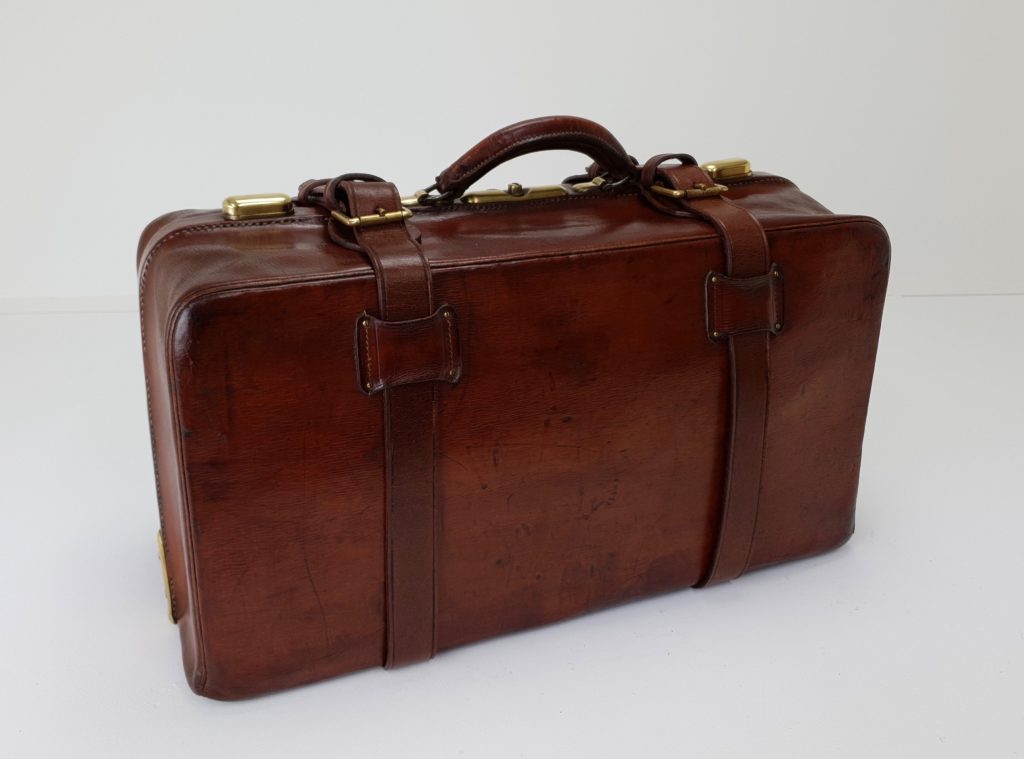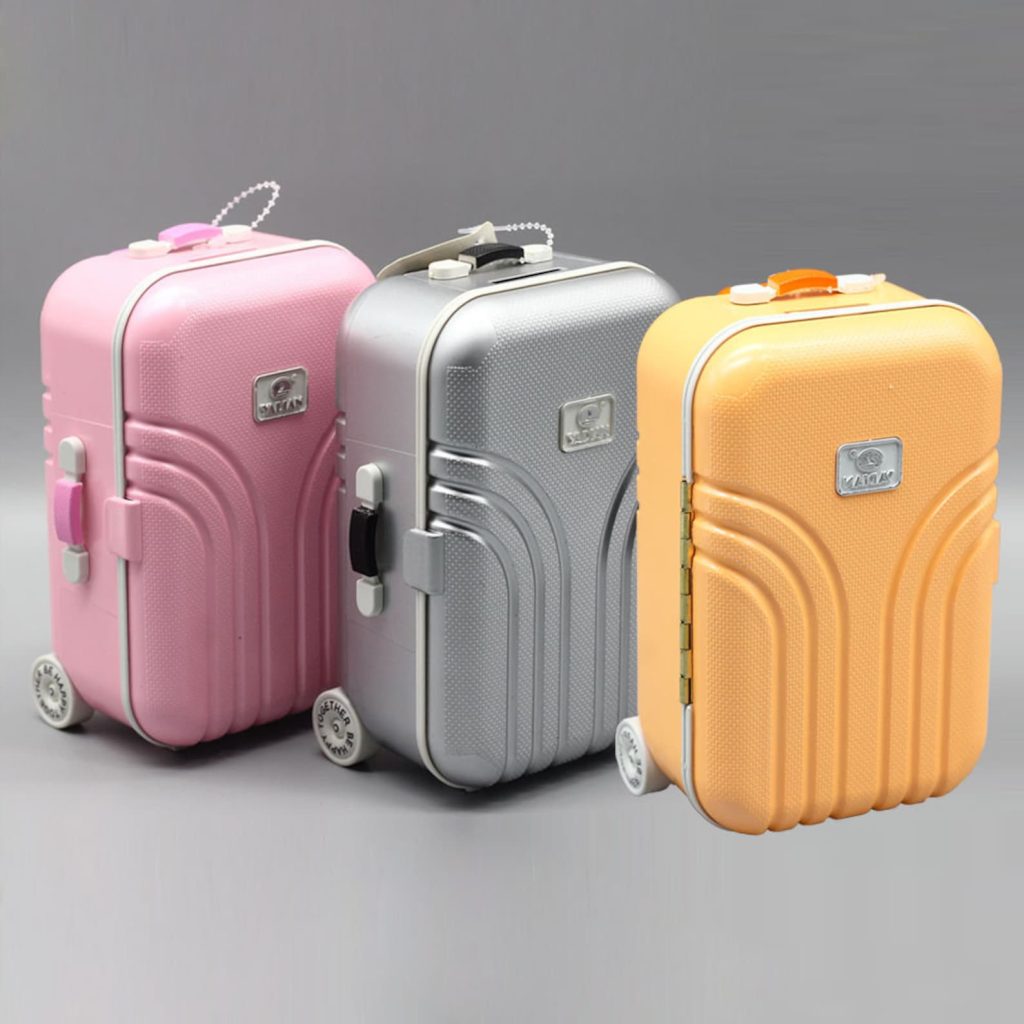Corporate events are all about leaving a lasting impression on your guests. Whether you're hosting a product launch, an annual meeting, or a team-building retreat,...
Travel
Guide
What Is The Dry Horse Massage Technique?
건마 massage is a technique used to help reduce muscle tension and promote relaxation in horses. A dry horse massage...
Is It Safe to Clean a Gun with WD-40?
Cleaning a gun is a responsibility that should not be taken lightly. There are many different cleaning products to choose...
What Exactly Are Private Placement Programs and Trade Platforms?
Exchanging Networks are pooled of money that invest in a variety of financial instruments such as stocks, cash, merchandise, ETFs,...
Latest News
What Are The Key Considerations For Choosing An Online Bus Booking Service?
In today’s fast-paced world, where travel is an integral part of our lives, finding a reliable and efficient online bus booking service is essential. Whether you’re planning a short trip or a long-distance adventure, booking your bus ticket should be a seamless and stress-free experience. If you’re looking to book a bas ke kuching or any other destination, there are several key considerations you should keep in mind. Let’s explore these considerations and how they can help you make the best choice.
User-Friendly Interface:
The first and foremost consideration when choosing an online bus booking service is the user interface. A user-friendly website or app can make the booking process a breeze. Look for a platform that offers a clean and intuitive design, easy navigation, and a straightforward booking process. This ensures that you can book your bus to Kuching or any other destination without any unnecessary hassles.
Availability of Routes:
Not all online bus booking services offer the same routes and destinations. Choosing a service that provides a wide range of options to cater to your travel needs is crucial. Whether you’re planning a local commute or a cross-country journey, ensure that the platform you choose covers your desired routes.
Pricing and Transparency:
Price transparency is vital when booking a bus ticket online. Be on the lookout for hidden fees and charges that can inflate the cost of your journey. A reputable service should display all fees clearly and provide a total cost breakdown. Additionally, consider comparing prices across different platforms to get the best deal for your bus to Kuching.
Payment Options and Security:
Safety and security should be a top priority when making online transactions. Ensure that the bus booking service offers secure payment options, such as credit card payments or reputable online payment gateways. Look for websites or apps with encryption and data protection measures to safeguard your personal information.
Customer Reviews and Ratings:
Before committing to an online bus booking service, take the time to read customer reviews and ratings. Feedback from fellow travelers can provide valuable insights into the reliability and quality of the service. Look for platforms with positive reviews and a strong reputation for customer satisfaction.
Cancellation and Refund Policies:
Life is unpredictable, and sometimes plans change. Make sure to review the cancellation and refund policies of the online bus booking service. A flexible policy can save you from unnecessary stress and financial losses if you need to alter your travel plans.
Customer Support:
In case you encounter any issues during the booking process or while traveling, responsive customer support is invaluable. Check if the service offers multiple contact channels, such as a helpline, email support, or live chat, to assist you promptly.
Additional Amenities and Services:
Some online bus booking platforms offer additional amenities and services, such as seat selection, onboard entertainment, Wi-Fi, and more. Consider your preferences and priorities when choosing a service that aligns with your travel needs and comfort.
In conclusion, selecting the right online bus booking service for your journey, be it a bus to Kuching or any other destination, is a decision that can greatly impact your travel experience. Considering these key factors, you can ensure a smooth and enjoyable ride from start to finish. Happy travels!
Turning Agricultural Waste Into Gold: Briquette Production Opportunities and Challenges
In recent years, the demand for sustainable and eco-friendly energy sources has been on the rise. As a result, various alternatives to conventional fuels are gaining traction, and one such alternative is briquette production from agricultural waste. Briquettes are compact blocks of biomass that can be used for heating, cooking, and even as a substitute for traditional charcoal. With growing concerns about environmental conservation and the increasing puitbrikett hind, the production of briquettes from agricultural waste presents both opportunities and challenges worth exploring.
1. The Need for Sustainable Energy Sources
As the world grapples with climate change and environmental degradation, there is a growing need for sustainable energy sources. Briquettes offer an eco-friendly solution, as they are made from renewable resources such as agricultural waste. This reduces the reliance on fossil fuels, mitigating greenhouse gas emissions and deforestation.
2. Abundant Agricultural Waste
One of the primary advantages of briquette production from agricultural waste is the abundance of raw materials. Agriculture generates a significant amount of waste, including crop residues, husks, shells, and stalks. These materials, if not properly managed, can contribute to pollution and pose disposal challenges. Converting this waste into briquettes addresses these issues and creates a valuable energy resource.
3. Economic Opportunities
Briquette production can be a source of income for rural communities. Farmers can collect and sell their agricultural waste to briquette producers, creating economic opportunities in regions with limited alternative employment options. This not only boosts the local economy but also reduces the financial burden on farmers.
4. Challenges in Briquette Production
While the production of briquettes from agricultural waste holds promise, it also comes with its set of challenges:
4.1. Technical Expertise
The process of converting agricultural waste into briquettes requires technical expertise. Proper machinery and know-how are essential for efficient production. Small-scale producers may need help accessing the necessary resources and knowledge.
4.2. Quality Control
Maintaining the quality and consistency of briquettes can be challenging. Variations in the moisture content and composition of agricultural waste can impact the quality of the end product. Quality control measures are crucial to produce briquettes that meet market standards.
4.3. Market Competition
The market for briquettes can be competitive, especially with the rising wood briquettes price. Briquette producers need to offer high-quality products at competitive prices to remain competitive. Additionally, marketing and distribution strategies must be well-planned to reach a wider customer base.
5. Environmental Impact Assessment
Producing briquettes from agricultural waste must be carried out with an awareness of its environmental impact. The sustainability of this alternative fuel source depends on responsible harvesting and production practices. Proper environmental impact assessments are crucial to ensure the process remains eco-friendly.
6. Conclusion
Briquette production from agricultural waste offers an environmentally friendly solution to the growing demand for sustainable energy sources. It harnesses the abundance of agricultural waste, creates economic opportunities, and reduces the wood briquettes price. However, addressing technical challenges, ensuring quality control, and conducting environmental impact assessments for long-term sustainability is essential. As the world continues to seek alternatives to conventional fuels, the potential of briquette production from agricultural waste must be considered.
Expert Tips For Effective Mold Removal In Your Home
Mold can be a persistent and potentially harmful problem in homes, and addressing it promptly and effectively is essential. If you’re dealing with mold issues in your New Jersey home, you’re not alone. The humid climate in the region makes it conducive for mold growth, but there are expert tips and techniques you can employ to tackle the problem effectively, including professional mold remediation New Jersey. In this guide, we’ll provide you with valuable insights and expert advice on mold remediation in New Jersey.
Identify the Source of Moisture
Before you start the mold removal process, it’s crucial to identify and eliminate the source of moisture that is causing the mold to thrive. Mold needs moisture to grow, so fixing any leaks, reducing humidity, and ensuring proper ventilation in your home is the first step in mold remediation.
Assess the Extent of the Mold Problem
Not all mold problems are the same. Some can be relatively minor and easy to address, while others may be more extensive and require professional assistance. Assess the extent of the mold growth in your home to determine whether you can handle it on your own or if you need to consult a mold remediation specialist in New Jersey.
Protect Yourself
Safety should be your top priority when dealing with mold. Mold spores can be harmful when inhaled or touched, so it’s essential to wear protective gear such as gloves, goggles, and a mask. Proper protection will minimize your exposure to mold and potential health risks.
Use the Right Cleaning Products
When it comes to cleaning mold, not all products are created equal. Opt for mold-specific cleaning products that are designed to effectively remove mold and prevent its return. Avoid using bleach, as it can sometimes exacerbate the problem by providing more moisture.
Scrub and Remove Mold
Carefully scrub the affected areas using a scrub brush or sponge with the chosen cleaning product. Be thorough and ensure you reach all the nooks and crannies where mold may be hiding. Afterward, carefully dispose of any contaminated materials, such as rags or sponges, in a sealed plastic bag.
Ventilate the Area
Once the mold is removed, it’s crucial to ventilate the area thoroughly. Open windows and doors to allow fresh air to circulate, and consider using fans or dehumidifiers to help dry out the space. Keeping the area dry will help prevent mold from returning.
Regular Inspections and Maintenance
Mold can return if the conditions are right, so it’s essential to perform regular inspections and maintenance to prevent its recurrence. Check for leaks, maintain proper ventilation, and watch for any signs of mold growth.
Consult a Professional
If the mold problem in your New Jersey home is extensive or you’re unsure about how to handle it safely, don’t hesitate to consult a professional mold remediation service. They have the expertise and equipment needed to address severe mold infestations safely and effectively.
In conclusion, mold remediation in New Jersey can be a challenging task, but with the right knowledge and precautions, you can effectively tackle the issue and create a safe and healthy living environment for you and your family. Remember to prioritize safety, identify the source of moisture, and consider professional assistance when necessary. By following these expert tips, you can successfully address mold issues and enjoy a mold-free home.
Making the Most of Winter: Practical Tips for Efficient Briquette Use in Cold Climates
As the cold season approaches, many of us turn to cost-effective heating solutions to keep our homes warm and cozy. One such option gaining popularity is the use of odav puitbrikett. These compressed blocks of wood offer an efficient and sustainable way to heat your home while also being eco-friendly. However, to make the most of this heating alternative in cold climates, it’s essential to understand how to use them efficiently. In this article, we’ll provide you with practical tips to ensure your winter heating remains efficient and cost-effective.
Choosing the Right Briquettes
The first step in optimizing your heating experience with wood briquettes is to select the right type. Not all briquettes are created equal, and choosing the best one for your needs can make a significant difference. Look for high-quality cheap wood briquettes made from sustainably sourced wood with a low moisture content. Lower moisture content means they will burn more efficiently, providing more heat and less smoke.
Proper Storage
Once you’ve acquired your briquettes, storing them properly is crucial. Moisture is the enemy of wood briquettes, as it can reduce their efficiency and make them harder to ignite. Store your briquettes in a dry, well-ventilated area, preferably indoors, to prevent them from absorbing environmental moisture.
Efficient Ignition
Getting your cheap wood briquettes to ignite efficiently is key to enjoying a warm and comfortable living space. To start the fire, use high-quality fire starters or kindling. Avoid using gasoline or other harmful chemicals, as they can release toxic fumes. Once the fire is burning steadily, add the briquettes gradually to maintain a consistent heat output.
Proper Airflow
Proper airflow is essential for efficient combustion. Make sure your fireplace or wood stove has adequate ventilation to allow for oxygen to reach the fire. Adjust the airflow dampers to maintain the desired temperature and avoid smoldering fires, which can produce more smoke and less heat.
Regular Maintenance
To keep your heating system operating at its best, perform regular maintenance. Clean the ashes and creosote buildup from your fireplace or stove regularly to maintain efficient combustion. A clean system will also reduce the risk of chimney fires and ensure a safer heating experience.
Zone Heating
Consider practicing zone heating to maximize the efficiency of your cheap wood briquettes. Instead of trying to heat your entire home, focus on the rooms you use most frequently. Close doors to unused rooms and use space heaters or other heating methods in these areas to reduce overall energy consumption.
Monitor Usage
Lastly, keep track of your briquette usage throughout the winter season. You can adjust your heating strategy as needed by monitoring how much you use and the resulting warmth. This can help you optimize your heating efficiency and reduce overall heating costs.
In conclusion, using cheap wood briquettes can be a practical and economical way to stay warm during the cold winter months in colder climates. You can make the most of this sustainable heating option by following these tips on selecting, storing, igniting, maintaining, and monitoring your briquette usage. Stay warm and cozy all winter long while being environmentally conscious and cost-effective.
Jamming To YouTube Tunes Offline: The Art of MP3 Conversion
In today’s digital age, YouTube has become the go-to platform for music lovers to discover and enjoy their favorite tunes. With millions of songs, music videos, and live performances readily available at our fingertips, YouTube offers a vast musical playground. However, sometimes we wish to take our favorite tracks offline, free from the constraints of an internet connection. This is where the art of MP3 conversion comes into play, and one tool that comes to mind is ytmp3.
The Need for Offline Music
1: Why Go Offline?
While streaming music on YouTube is convenient, it has its limitations. You might encounter buffering issues, unexpected interruptions due to poor network connectivity, or even data consumption concerns. On the other hand, offline music allows you to enjoy your favorite tracks without such worries. It’s perfect for road trips, flights, or simply when you want to save on data usage.
2: The Magic of MP3
MP3 files are a popular format for offline music. They offer a good balance between audio quality and file size, making them ideal for storing a large collection of songs on your device. Converting YouTube videos to MP3 files allows you to create your personalized music library that you can listen to anytime, anywhere.
The Art of MP3 Conversion
3: Choosing the Right Tool
One of the most efficient tools for converting YouTube videos to MP3 format is ytmp3. This online converter is user-friendly and provides a seamless experience for extracting audio from YouTube videos. Paste the YouTube video link, hit the convert button, and you’ll have your MP3 file ready for download within moments.
4: Quality Matters
When using a converter like ytmp3, you can select the desired audio quality. Higher quality settings will result in larger file sizes, while lower settings will conserve storage space but may compromise on audio fidelity. It’s essential to strike the right balance based on your preferences and device storage capacity.
5: Organizing Your Collection
Once you’ve converted your favorite YouTube tracks to MP3, it’s a good practice to organize your music library. Create folders, and playlists, or use music management software to keep your collection neat and accessible.
Legal and Ethical Considerations
6: Copyright Awareness
While the convenience of converting YouTube videos to MP3 is undeniable, it’s crucial to be aware of copyright laws. Uploading and distributing copyrighted material without permission is illegal in many countries. Make sure you only convert and download content for which you have the necessary rights or permission.
7: Support the Artists
Remember that artists and content creators earn revenue from legitimate streams and downloads. If you genuinely love a song, consider purchasing it from a legal music platform to support the artists and the music industry.
Conclusion
In the world of digital music, MP3 conversion tools like ytmp3 offer a convenient way to take your favorite YouTube tunes offline. With the right approach, you can enjoy your music library without worrying about connectivity or data usage. However, it’s essential to be mindful of copyright laws and support the artists who create the music we love. So, start building your offline music collection, and enjoy the art of MP3 conversion.
How To Pack a Suitcase Like a Pro: Tips and Tricks for Efficient Packing
Packing a suitcase efficiently is an art seasoned travelers have mastered over time. Whether you’re planning a weekend getaway or a long-haul adventure, knowing how to pack a kohver like a pro can make your trip smoother and more enjoyable. In this article, we’ll share valuable tips and tricks to help you maximize space, keep your belongings organized, and minimize stress when packing your suitcase.
Start with a Packing List: The first step to efficient packing is creating a detailed list. Jot down all the items you’ll need for your trip, from clothing and toiletries to electronic gadgets and travel documents. Having a list ensures you will remember all essentials and helps you stay organized throughout the packing process.
Choose the Right Suitcase: Selecting the appropriate suitcase is crucial. Consider the length of your trip and the type of activities you’ll be engaging in. A carry-on suitcase is often sufficient for shorter trips, while longer journeys may require a larger checked suitcase. Opt for a suitcase with compartments or pockets to help keep your belongings organized.
Roll Your Clothes: Rolling your clothes instead of folding them can save a significant amount of space in your suitcase. Not only does this technique prevent wrinkles, but it also allows you to fit more items into your luggage. Roll each clothing item tightly and place them side by side in rows within your suitcase.
Pack Efficiently: When packing, place heavier items, such as shoes and toiletries, at the bottom of your suitcase. Fill any empty spaces with smaller items like socks and underwear. Utilize packing cubes or zip-lock bags to group similar items together, making it easier to find what you need and keeping your suitcase tidy.
Minimize Shoes: Shoes can take up a lot of space in your suitcase, so try to limit the number you bring. Choose versatile shoes that can be worn with multiple outfits, and wear your bulkiest pair during travel to free up space. Stuff socks or small items inside your shoes to maximize every inch.
Use Travel-Sized Toiletries: Toiletries can add significant weight and volume to your suitcase. Invest in travel-sized toiletries or purchase empty travel containers to transfer your favorite products into. This saves space and ensures you comply with airline liquid restrictions.
Pack Multi-Functional Clothing: Select versatile clothing items that can be mixed and matched. Neutral-colored pieces and basics that can be dressed up or down are excellent choices. This approach allows you to create various outfits while packing fewer items.
Leave Room for Souvenirs: If you plan to bring back souvenirs from your trip, leave some extra space in your suitcase. This will prevent you from struggling to fit everything on the return journey and potentially avoid overweight luggage fees.
In conclusion, packing a suitcase like a pro requires careful planning and organization. By starting with a packing list, choosing the right suitcase, rolling your clothes, and using space-saving techniques, you can efficiently pack for any trip. Remember that the key to successful packing is balancing bringing the essentials and minimizing excess. With these tips and tricks, you’ll be well-prepared to make the most of your suitcase space on your next adventure.
Insider Tips For Negotiating Favorable Terms With Business Credit Vendors
When it comes to establishing and maintaining a successful business, having access to credit is often a crucial component. Whether you need to purchase inventory, invest in equipment, or cover unexpected expenses, business credit can provide the financial flexibility your company needs to thrive. In this article, we’ll explore what you need to know about tier 4 business credit and share insider tips for negotiating favorable terms with business credit vendors.
Understanding Tier 4 Business Credit
Before diving into negotiation strategies, it’s essential to understand the concept of tier 4 business credit. In the world of business credit, vendors categorize customers into different tiers based on their creditworthiness. Tier 1 represents the most creditworthy customers, while tier 4 comprises those with less established credit or potentially some credit challenges.
Tier 4 business credit may be a starting point for businesses looking to build their credit history or recover from past financial setbacks. To secure favorable terms with vendors in this tier, you’ll need to employ specific negotiation tactics.
Tip 1: Know Your Credit Profile
Before approaching any vendor, take a close look at your company’s credit profile. Please obtain a copy of your business credit report and review it for accuracy. Correct any errors or discrepancies to ensure you present the most accurate and favorable picture of your business’s financial health.
Tip 2: Build a Strong Relationship
Establishing a good working relationship with your vendors can go a long way in securing favorable credit terms. Consistently pay invoices on time, communicate openly, and be transparent about your business’s financial situation. Vendors are more likely to be flexible with those they trust.
Tip 3: Leverage Your Payment History
If your business has a positive payment history with a vendor, use it to your advantage. When negotiating terms, remind the vendor of your timely payments and your commitment to a mutually beneficial partnership. This can encourage them to offer you better terms.
Tip 4: Showcase Your Growth Potential
Demonstrate to vendors that your business is on an upward trajectory. Please provide them with your growth projections, new client contracts, or any other evidence of your business’s potential for success. Vendors may be more willing to extend favorable credit terms to businesses with promising futures.
Tip 5: Be Prepared to Negotiate
Negotiating with vendors is a standard practice in the business world. Be prepared to discuss terms and be bold and push for what your business needs. Whether it’s a longer payment period, reduced interest rates, or increased credit limits, clear and confident communication is key.
Tip 6: Explore Alternative Financing Options
In addition to traditional business credit vendors, consider exploring alternative financing options. This could include business loans, lines of credit, or supplier trade credit. Diversifying your sources of credit can help you secure more favorable terms.
Tip 7: Seek Professional Assistance
If negotiating credit terms feels daunting, feel free to seek professional assistance. Financial advisors or consultants can provide valuable insights and negotiation strategies that align with your business’s goals.
In conclusion, securing favorable terms with tier 4 business credit vendors is achievable with the right approach. Understanding your credit profile, building strong relationships, showcasing your business’s potential, and being prepared to negotiate are all essential steps. By implementing these insider tips, you can enhance your business’s financial flexibility and pave the way for future success.
The Legalities Of Vaping Pot: Navigating the Laws and Regulations
In recent years, vaping pot has gained immense popularity as a seemingly safer alternative to traditional smoking methods. With the rise of vaping, however, comes a web of complex legalities that vary from one jurisdiction to another. Understanding the laws and regulations surrounding vaping pot is crucial to avoid potential legal troubles and ensure a safe and enjoyable experience. In this article, we’ll explore the legal landscape of vaping pot, shedding light on key aspects that every user should be aware of.
1. Federal vs. State Laws
One of the most significant challenges in navigating the world of vaping pot is the stark contrast between federal and state laws. While some states have legalized both medical and recreational marijuana use, the federal government still classifies marijuana as a Schedule I controlled substance. This discrepancy can create confusion and put users at risk, as federal laws can still be enforced in states where marijuana is legal.
2. Age Restrictions
Age restrictions on vaping pot vary by location, but most states in the U.S. have set the legal age at 21 or older. It’s essential to be aware of the specific age requirements in your area to avoid legal consequences associated with underage use.
3. Licensing and Dispensaries
In states where marijuana is legal, there are often strict regulations surrounding the production, sale, and distribution of pot products. Users should purchase their vaping supplies from licensed dispensaries to ensure product quality and legality. Avoid the temptation of purchasing พอตเปลี่ยนหัวราคาถูก from unverified sources, as this can lead to health risks and legal issues.
4. Consumption in Public Spaces
Another vital consideration is where you can legally vape pot. Many states prohibit public consumption, meaning you can’t use pot products in parks, streets, or other public areas. Understanding the rules around consumption in your locality is crucial to avoid fines or arrests.
5. Transportation Laws
Vaping pot while driving or operating heavy machinery is not only dangerous but also illegal in many places. Laws regarding pot and transportation vary, so it’s essential to research and comply with local regulations to avoid accidents and legal repercussions.
6. Employer Policies
Even in states where marijuana is legal, many employers maintain strict drug-free workplace policies. It’s crucial to understand your employer’s stance on pot use, as failing a drug test could lead to job loss, even if you consumed pot legally.
7. Federal Facilities and Border Crossings
Using pot, even in states where it’s legal, is strictly prohibited on federal properties, including national parks and government buildings. Additionally, crossing state or international borders with pot, even between two legal states, can lead to severe legal consequences.
8. Evolving Regulations
The legal landscape of vaping pot is constantly evolving, with new regulations being implemented regularly. Staying informed about changes in local laws and federal policies is essential to remain compliant with the latest regulations.
In conclusion, while vaping pot may offer a convenient and potentially safer way to enjoy marijuana, understanding the legalities surrounding it is crucial. The key to a trouble-free experience lies in being aware of federal and state laws, age restrictions, licensed dispensaries, consumption rules, transportation laws, employer policies, and restrictions in federal facilities and at border crossings. As the legal framework surrounding marijuana continues to evolve, staying informed is the best way to ensure you enjoy vaping pot within the bounds of the law.
Resolving Issues and Complaints with Your Residential Painting Company
Hiring a residential painting company can be an excellent way to give your home a fresh, vibrant look. However, issues and complaints can occasionally arise even with the most reputable and skilled painting service. Whether it’s a problem with the quality of work, scheduling delays, or misunderstandings, knowing how to handle these situations can make the difference between a satisfactory resolution and a frustrating experience. In this guide, we’ll provide you with essential tips on addressing and resolving any issues or complaints with your painting service to ensure you get the desired results.
Open Communication
Effective communication is the key to resolving any problem. If you notice something that doesn’t meet your expectations or have concerns about the progress, don’t hesitate to contact the residential painting company immediately. Addressing issues as soon as they arise can prevent them from escalating and lead to quicker resolutions.
Document the Issue
Before contacting the painting service, take photos and make notes of the problem areas or concerns. Visual evidence will help you explain your issue more clearly and provide a basis for discussing it with the company. Make sure to date and label your documentation for easy reference.
Contact the Company
Once you’ve documented the problem, contact the residential painting company politely and constructively. Explain your concerns, referencing the specific issues you’ve documented. A professional company will appreciate your feedback and work with you to find a solution.
Request a Site Visit
If the issue is substantial, consider requesting a site visit from the painting company’s representative. This lets them assess the problem firsthand and discuss potential solutions with you. A site visit often leads to a more accurate understanding of the situation and a quicker resolution.
Review the Contract
Review the contract you signed with the painting company. Understanding the terms and conditions, including any warranties or guarantees, is essential. The contract may outline procedures for addressing disputes or concerns, which can help find a resolution.
Mediation or Arbitration
In cases where communication breaks down, and you can’t reach an agreement with the residential painting company, you may consider mediation or arbitration. Many contracts have provisions for third-party dispute resolution services, which can be a fair and impartial way to resolve issues.
Leave a Review
After resolving the issue, consider leaving an honest review of your experience with the residential painting company. Your feedback can help other potential customers make informed decisions when choosing a painting service. Be fair and objective in your assessment, highlighting both the positive and negative aspects of your experience.
In conclusion, handling issues or complaints with your residential painting company is all about effective communication and a willingness to find a satisfactory resolution. By documenting the problem, contacting the company promptly, and following the contract’s guidelines, you can increase the chances of resolving the issue to your satisfaction. Remember that most reputable companies are dedicated to customer satisfaction and will work with you to address any concerns during your painting project.
Zooming Into Development: The Top 5 Push Cars Boosting Toddler Growth
Push cars have dramatically revolutionized playtime for toddlers, bringing a delightful mixture of fun and physical development right to their tiny fingertips. These fantastic toys ignite the flames of imagination and independence in our little ones and play a crucial role in promoting various aspects of physical development, such as motor skills, coordination, and balance. As parents and guardians, choosing the right tõukeauto is paramount in ensuring your toddler gets the most out of their playful hours. So, buckle up as we guide you through the top 5 push cars that have been turning heads and winning hearts in promoting physical development in toddlers.
1. The All-Rounder: Multifunctional Push Cars
Multifunctional push cars are the Swiss Army knives of the toddler automotive world. They come loaded with various features such as adjustable handles, detachable floors, and safety barriers, catering to a wide age range of toddlers. These push cars adapt as your child grows, ensuring that the car evolves with your toddler’s developmental stages, making them a versatile and long-lasting choice.
2. Safety First: Push Cars with High-Back Seats and Seat Belts
Safety is paramount when it comes to choosing a push car. Some push cars have high-back seats and seat belts, ensuring your little one is secure and comfortable during their adventurous rides. These features provide a safe environment for toddlers and promote the development of a sense of security and awareness regarding safety from a young age.
3. Get a Grip: Push Cars with Ergonomic Handles
For toddlers, mastering the art of grip and coordination is a significant milestone. Push cars with ergonomic handles are designed to be easily grasped by tiny hands, promoting the development of fine motor skills and hand-eye coordination. These cars encourage toddlers to explore and navigate their surroundings actively, fostering a sense of direction and spatial awareness.
4. Fun with Learning: Educational Push Cars
Educational push cars have various interactive features such as lights, sounds, and music, turning each ride into a delightful learning experience. These cars stimulate sensory development and cognitive skills, promoting curiosity and a love for learning. They also help in developing the toddlers’ auditory and visual senses, enhancing their overall sensory experiences.
5. Pedal to the Metal: Push Cars with Pedals
Push cars with pedals introduce toddlers to the world of cycling gently. They encourage the little ones to use their legs, promoting muscle development and enhancing motor skills. Pedaling also improves balance and coordination, preparing them for a smoother transition to bicycles in the future.
Conclusion:
Choosing a push car that aligns with your child’s developmental needs and interests is essential. Each push car brings unique features and benefits to the table, aimed at promoting various aspects of physical and cognitive development in toddlers. By selecting the right vehicle, you’re not just ensuring hours of endless fun but also steering your little one towards a path of holistic growth and development.


